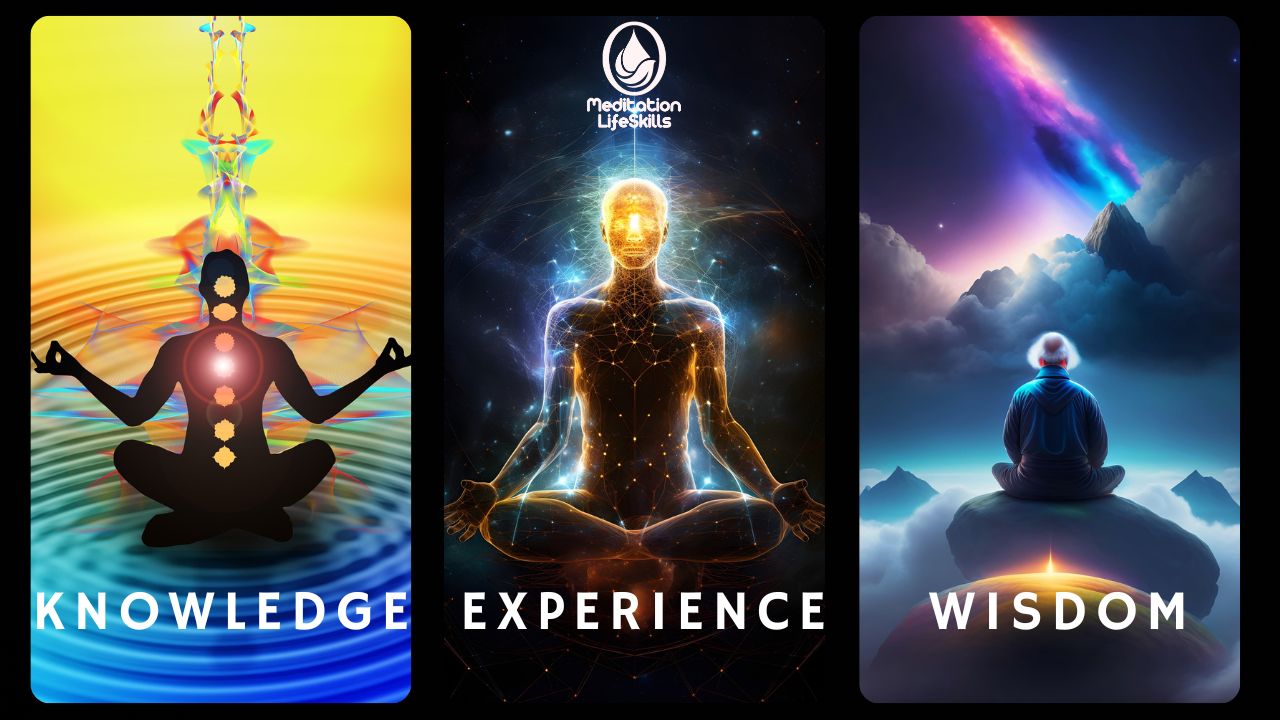In this article, we'll explore how to meditate spiritually and connect with the divine. Whether you're a seasoned practitioner or new to the practice, meditation is a powerful tool to calm the mind, reduce stress, and cultivate a deeper sense of inner peace.
GET STARTED TODAY WITHOUT ANY RISK!
Get 7 Days of Unlimited Access Right Now
for Free When You Download Our App!
A life of transformation begins with action. There are seven stages of meditation instruction on a single platform. Live monthly Zoom coaching and training sessions.
Get unlimited free access to the Meditation Life Skills app for 7 days by downloading it now! Visit MeditationLifeSkills.com.
In a world that is constantly moving at a breakneck speed, it can be easy to lose touch with our inner selves and the spiritual realm.
However, meditation provides a gateway to connect with the divine and access the depths of our souls.
From setting the right intentions to choosing the right meditation style, we'll guide you through the process of tapping into your spiritual self. So, whether you're looking to deepen your spiritual practice or simply find a moment of stillness in your day-to-day life, read on to discover how to connect with the divine through the transformative power of meditation.
Understanding the Benefits of Spiritual Meditation
Spiritual meditation is a powerful practice that can help you connect with your higher self and the divine. Unlike other forms of meditation, which focus on stress reduction, spiritual meditation aims to cultivate a sense of inner peace and connect with the divine.
By tapping into your spiritual self, you can gain a deeper understanding of your purpose in life and connect with something greater than yourself.
Research has shown that spiritual meditation can have numerous benefits, including reducing anxiety and depression, improving emotional regulation, and enhancing feelings of well-being.
By calming the mind and reducing stress, spiritual meditation can also improve physical health and reduce the risk of chronic disease. Overall, spiritual meditation is a powerful tool for connecting with the divine and cultivating a deeper sense of inner peace.
How to Prepare for Spiritual Meditation
Before beginning your spiritual meditation practice, it's essential to prepare your mind and body. Start by finding a quiet, comfortable space where you won't be disturbed. You may want to light candles or burn incense to create a peaceful atmosphere. It's also helpful to wear loose, comfortable clothing that won't restrict your breathing or movement.
Next, set an intention for your meditation session. This could be as simple as setting the intention to connect with your higher self or as specific as setting an intention to receive guidance on a particular issue. By setting an intention, you'll give your meditation practice a sense of purpose and direction.
Finally, take a few moments to focus on your breath and calm your mind. Take deep, slow breaths in through your nose and out through your mouth. As you breathe, allow your thoughts to drift away, and focus your attention on the present moment.
The Different Types of Spiritual Meditation Techniques
There are several different types of spiritual meditation techniques that you can practice. The most common include:
Mindfulness Meditation
Mindfulness meditation involves focusing your attention on the present moment and observing your thoughts and feelings without judgment. By becoming more aware of your thoughts and feelings, you can cultivate a deeper sense of inner peace and connect with your higher self.
Loving-Kindness Meditation
Loving-kindness meditation involves cultivating feelings of love and compassion for yourself and others. By sending positive energy to yourself and those around you, you can connect with the divine and cultivate a deeper sense of inner peace.
Visualization Meditation
Visualization meditation involves creating a mental image of a specific situation or scenario. By visualizing positive outcomes and focusing on your goals, you can connect with your higher self and manifest your desires.
Chanting Meditation
Chanting meditation involves repeating a mantra or phrase to focus the mind and connect with the divine. By chanting a specific phrase, you can cultivate a sense of inner peace and connect with something greater than yourself.
Steps to Follow for a Successful Spiritual Meditation Session
Now that you understand the benefits of spiritual meditation and the different types of techniques, let's explore the steps to follow for a successful spiritual meditation session.
Step 1: Find a Quiet Space
Find a quiet, comfortable space where you won't be disturbed. This could be a room in your home, a park, or a quiet corner in your office.
Step 2: Set an Intention
Set an intention for your meditation session. This could be as simple as setting the intention to connect with your higher self or as specific as setting an intention to receive guidance on a particular issue.
Step 3: Get Comfortable
Sit in a comfortable position with your spine straight and your feet flat on the ground. You may want to use a cushion or blanket to support your back and hips.
Step 4: Focus on Your Breath
Take deep, slow breaths in through your nose and out through your mouth. As you breathe, allow your thoughts to drift away, and focus your attention on the present moment.
Step 5: Practice Your Chosen Technique
Practice your chosen spiritual meditation technique. Whether you choose mindfulness meditation, loving-kindness meditation, visualization meditation, or chanting meditation, focus your attention on the practice and allow yourself to connect with the divine.
Step 6: End Your Session
When you're ready to end your meditation session, take a few deep breaths and slowly open your eyes. Take a moment to reflect on your experience and express gratitude for the opportunity to connect with your higher self.
Tips to Enhance Your Spiritual Meditation Practice
While spiritual meditation is a powerful practice on its own, there are several tips you can use to enhance your experience.
Tip 1: Practice Gratitude
Take a few moments before and after your meditation practice to express gratitude for the opportunity to connect with the divine.
Tip 2: Use Essential Oils
Diffusing essential oils like lavender or frankincense can help create a peaceful atmosphere and enhance your spiritual meditation practice.
Tip 3: Try Different Techniques
Experiment with different spiritual meditation techniques to find the one that resonates with you the most.
Tip 4: Practice Regularly
Consistency is key when it comes to spiritual meditation. Try to practice at least once a day to cultivate a deeper sense of inner peace and connect with your higher self.
Common Challenges Faced During Spiritual Meditation and How to Overcome Them
While spiritual meditation can be a transformative practice, it's not always easy. Here are some common challenges you may face during your spiritual meditation practice and how to overcome them:
Challenge 1: Restlessness
If you find yourself feeling restless or distracted during your meditation practice, try to focus on your breath and visualize yourself becoming more centered and grounded.
Challenge 2: Negative Thoughts
If negative thoughts arise during your meditation practice, try to observe them without judgment and let them pass by. Refocus your attention on your breath or your chosen technique.
Challenge 3: Physical Discomfort
If you experience physical discomfort during your meditation practice, try adjusting your posture or using props like cushions or blankets to support your body.
Best Practices for Developing a Consistent Spiritual Meditation Routine
Developing a consistent spiritual meditation routine is essential if you want to reap the full benefits of the practice.
Here are some best practices for developing a consistent routine:
- Practice at the Same Time Every Day
Try to practice at the same time every day to establish a consistent routine.
- Start Small
Start with just a few minutes of meditation each day and gradually increase the time as you become more comfortable with the practice.
- Use a Timer
Set a timer for your meditation practice to help you stay focused and consistent.
- Be Patient
Remember that spiritual meditation is a practice, and it takes time to develop a consistent routine. Be patient with yourself and trust the process.
The Role of Guided Meditation in Spiritual Practice
Guided meditation can be a helpful tool for spiritual practitioners, particularly those who are new to the practice. Guided meditation involves listening to a teacher or practitioner who guides you through the meditation practice.
Guided meditations can be found online or through meditation apps, and they can be a helpful way to establish a consistent meditation practice and gain a deeper understanding of the practice.
Conclusion and Final Thoughts on Spiritual Meditation
In conclusion, spiritual meditation is a powerful tool for connecting with the divine and cultivating a sense of inner peace. Whether you're new to the practice or a seasoned practitioner, there are many different techniques you can use to enhance your experience.
By following the steps outlined in this article and developing a consistent routine, you can tap into your spiritual self and connect with something greater than yourself.
Remember to be patient with yourself, practice regularly, and trust the process. With time and dedication, you can unlock the transformative power of spiritual meditation.















